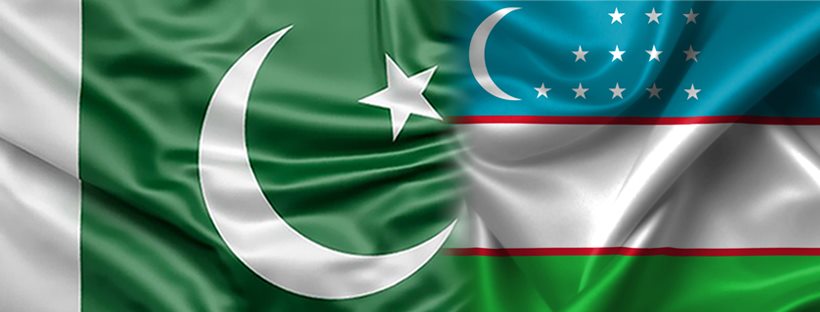Today, business dialogue is gaining new depth: from textiles and agricultural products to pharmaceuticals and educational exchanges – in every area, there is a sense of growth and the taste of real opportunities. Openness to joint projects, respect for quality standards, and commitment to sustainability turn geography into an advantage and ambitions into practical solutions.
Let us consider the volume of mutual trade for 2024 and the elapsed period of the current year, as well as the target benchmarks through the end of 2025 and 2026.
According to the Ministry of Investments, Industry and Trade (MIIT), in January-July 2025, the mutual trade turnover between Uzbekistan and Pakistan reached $320 million (exports – 231 million, imports – 89 million), which is $66 million more than in the same period of the previous year. This dynamic confirms the stability of growth and creates a foundation for new projects in 2025-2026.
Top 5 Export Positions
According to the provided information, the main contribution to the increase in Uzbekistan’s exports came from the following categories:
fruit and vegetable products – $183 million (+62 million);
oil and gas products – $1.7 million (+0.927 million);
leather goods – $0.415 million (+0.369 million);
electrical equipment –$0.25 million (+0.231 million);
food products – $0.298 million (+0.203 million).
It should be noted that individual import categories from Pakistan were not detailed in the provided data. However, the total import volume amounted to $89 million.
Logistics Routes
At present, local carriers are expanding traffic along the multimodal corridor Uzbekistan – Afghanistan – Pakistan (Termez – Mazar-i-Sharif – Kabul – Peshawar). In the first half of 2025, 662 thousand tons of various goods were transported through Iranian ports, and 367 thousand tons through Pakistani ports. This demonstrates that the Pakistani route has already taken a significant share in southern maritime logistics, complementing the Iranian gateways.
Trade Regimes and Market Access
According to MIIT, under preferential trade agreements, customs benefits have been granted for 17 types of products, and a preferential regime has been introduced for 29 commodity items.
In addition, in cooperation with Pakistan’s Department of Plant Protection, phytosanitary permits have been obtained for 22 types of agricultural products – an essential step in scaling up fruit and vegetable exports.
Industry, Exhibitions, and Agreements
In February 2025, the national exhibition Made in Uzbekistan was held in Lahore. According to reports, its outcomes included:
181 trade agreements with a total value of $500 million;
a portfolio of 15 joint projects worth $186 million.
The focus of cooperation covers textiles, the leather industry, electrical engineering, construction materials, pharmaceuticals, and the agro-industrial sector.
Drivers for 2025-2026
According to the plans of both sides, the key accelerators of growth will include regular trade and economic forums and business missions, the establishment of a joint textile enterprise with Tabani Group, projects in the agro-industrial complex (processing, logistics, export of fresh and processed products), the expansion of preferential trade agreement benefits to more than 100 items, and the strengthening of the services sector (including tourism and education).
Based on the presented data and the current structure of dialogue, the immediate practical tasks for businesses and agencies may include: the route through Afghanistan – clarification of standard product categories for which the corridor is already commercially viable; work on reducing insurance rates, optimizing transit time and tariffs; port balance – maintaining diversification between Iranian (Bandar Abbas/Chabahar) and Pakistani (Karachi/Gwadar) gateways, taking into account freight rates and seasonal load; TIR/eTIR procedures and the “single window” – further unification and digitalization of procedures to reduce delivery time and costs; certification and SPS/halal requirements – expanding mutual recognition (including phytosanitary documents, GMP for the pharmaceutical industry), labeling and packaging standards, and currency control; textiles and light industry – identifying “quick wins” along the yarn/thread → fabrics → finished clothing/home textiles chain; determining what is more feasible to export and what is more profitable to localize jointly; and other areas.
Forecast and Risks
It is expected that, provided current logistics are maintained and the announced initiatives are implemented, trade turnover will continue to grow steadily over the next 12-18 months. However, in business planning, it is essential to take into account three key risks:
the logistics and insurance premium on the Afghan segment;
possible non-tariff barriers (certification, SPS, labeling);
volatility of freight rates and exchange rates.
Growth catalysts may include the expansion of the preferential list and the acceleration of mutual recognition of certificates, the launch of joint production (textiles, agro-industrial complex, pharmaceuticals), integration into green/ESG supply chains, scaling up business missions, and targeted B2B matchmaking for specific orders.
The material is based on the explanations provided by Bekzod Oripov, Head of the Department for the Development and Implementation of Export Programs of the MIIT of the Republic of Uzbekistan, and official statistics released by MIIT.
Abduaziz Khidirov, UzA


